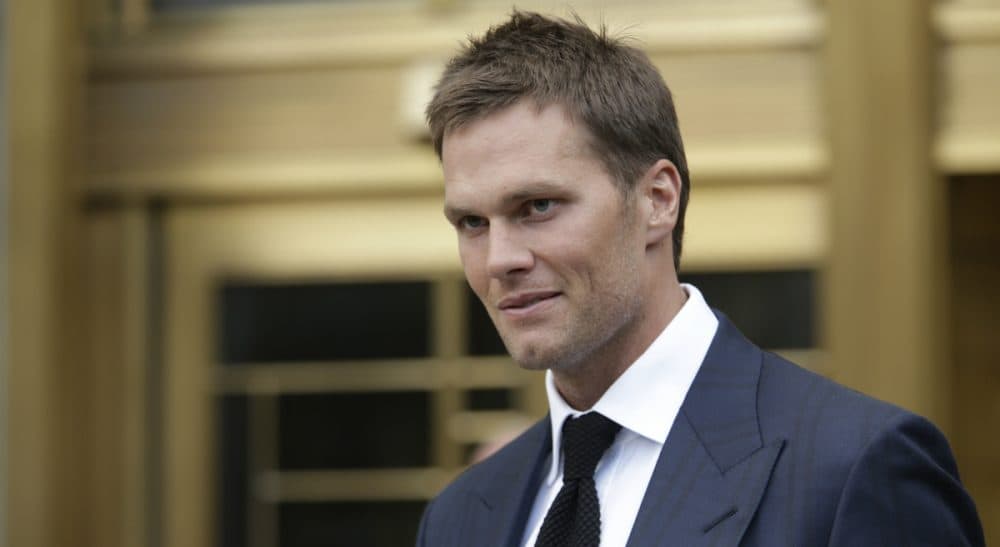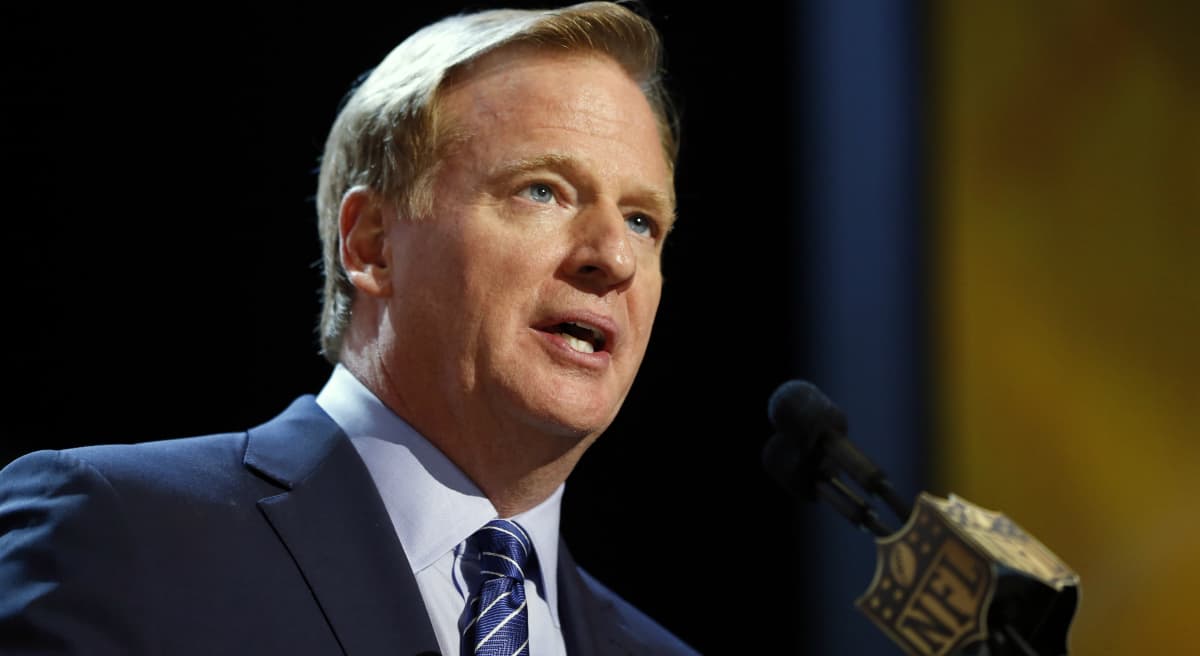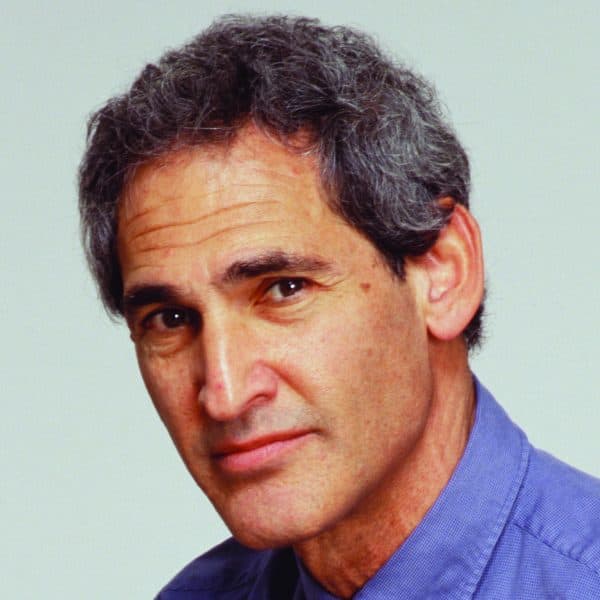Advertisement
DeflateGate, And The Patriots' False Appearance Of Guilt

“There is no truth,” the ancient sophists proudly proclaimed. “If there were, we couldn’t know it, and if we knew it no one would believe it.” Instead of truth, these philosophers preached the power of rhetoric — the ability to convince and induce others to act on appearances, however false. They also insisted that cheaters often fare better than those who play by the rules.
The NFL has learned this lesson well. These last several months it repeatedly created or capitalized on false appearances. When suspicions arose during that fateful AFC Championship game that the Patriots might have deflated footballs after referees examined them, the league immediately leaked false measurements that spread like wildfire and set the public narrative.
No eyewitnesses, and no real proof. No matter. The league would manufacture it, and suspend the quarterback for being 'generally aware' of something that most likely never happened.
Patriots coach Bill Belichick and quarterback Tom Brady protested their innocence, but they could not explain the numbers. Of course they couldn’t: The numbers weren’t real. But they sure appeared damning. The Patriots repeatedly requested the true numbers, but the league withheld them, the better to allow the perception of cheating to saturate the common sense. Months later, the NFL privately shared the truth with the Patriots — and then only on condition the team not release the truth until the league chose to publish its independent findings.
Nearly four months after the AFC Championship game between the Patriots and the Colts, the league issued its final report, once again creating the appearance of guilt: “All eleven ... Patriots game balls tested measured below the minimum ... allowed by Rule ... on both of two air pressure gauges used to test the balls. The four Colts balls tested each measured within the 12.5 to 13.5 psi range permitted...”
So to the public and the media it boiled down to this: All of the Patriots balls were illegally under-inflated, and all the Colts' balls were legal. Res ipsa loquitur -- the thing speaks for itself. The Patriots cheated; Tom Brady must have been aware.
In the months since, many of us who care about the truth — whether or not we root for the Patriots (and I do not) -- have come to appreciate this carefully constructed, false appearance of guilt. Initially set at the legal minimum in a warm dry locker room, then exposed for nearly two hours to a cold, rainy playing field, naturally the Patriots balls’ pressure had dropped. Science couldn’t explain it if they hadn't all measured below the legal minimum. The league’s accusatory statement, apparently damning at first blush, turns out to be misleading, irrelevant, and thoroughly predictable.
So it was with the league-sponsored “independent” Wells report, which concluded that it was more likely than not that the Patriots' locker room attendant secretly deflated the balls, and Tom Brady knew about it. No eyewitnesses, and no real proof. No matter. The league would manufacture it, and suspend the quarterback for being “generally aware” of something that most likely never happened.
Advertisement
The league’s lawyers who also doubled as independent investigators, hired outside scientific consultants to craft their conclusion based on logical deception and false appearances. To show the experienced referee mis-remembered which of his two gauges he used 24 times, they shifted rulers and photographed the gauges at a distorted angle to deflate the obvious difference between them. They had the ref admit it was “certainly possible” he had mis-remembered. It’s “certainly possible” that the next bridge I drive across will collapse, but I’ll bet my life and the lives of my family this “certain possibility” won’t happen.

The expert accusers’ report purported to “replicate” and “simulate” the effects of time and temperature, appearing to prove tampering. All the while these complex graphs and statistical analyses conveniently distorted actual halftime environmental conditions, somehow ignoring the fact that the Patriots balls were measured one by one while the remainder of the balls were kept together, cold and wet in an insulated bag that retarded their pressure rise.
Sometimes appearances work against you. In that case, simply bury unwarranted false assumptions and hope no-one notices. With no logical support and against all odds, the league and their investigators reversed the sequence of events at halftime, diminishing the time during which the Colts balls naturally re-inflated in a warm dry locker room: Of course the Patriots ball pressure dropped more than the Colts, but the league makes it seem sinister and inexplicable unless the Patriots cheated.
But the grandest move took place on July 28, when commissioner Roger Goodell manipulated appearances and grabbed headlines by announcing that Brady had destroyed the cell phone he was initially unwilling to hand over. Of course, the NFL only knew about the destroyed cell phone because the quarterback himself disclosed it. Furthermore, although the public has latched onto this appearance of obstruction, lost in all this is the fact that Brady turned over his complete cell phone records that identified everyone he was in touch with. Wells called it impractical, but how difficult is it to contact 13 people when you’ve already spent millions on an investigation? The league has created and amplified the public perception that Brady has stonewalled the investigation. It’s not true. But in the world of the contemporary sophists called the NFL, appearance is what matters. Reality is an afterthought.
The league has created and amplified the public perception that Brady has stonewalled the investigation. It’s not true.
On Monday, the league appears for the third time to argue in federal court that the truth no longer matters. Whether or not the Patriots did in fact deflate the footballs — whether or not Brady was actually aware of the scheme, the commissioner, Roger Goodell, acting as a judge in his own case, on appeal from his own prior decision, remains convinced. And Goodell's perception, the league’s lawyers insist — whether true or false — under the Collective Bargaining Agreement, is all that counts.
But if in the end, Judge Berman does find the league's punishment was the unprecedented product of a process that falls well below minimum standards of fundamental fairness, then Tom Brady's suspension will be reversed.
In that case feeling rather than fact will have triumphed over appearance.
UPDATED August 31, 2015, 12:55 p.m.: Monday's public hearing lasted about three minutes. Judge Berman announced that both sides, in spite of their best efforts, cannot reach a mutually satisfactory settlement. After each side thanked him, declaring they had nothing else to add, the judge then informed the public he would render his judgement within the next few days. Stepping back, it seems to me, again, that the judge’s feelings about fairness rather than any finding of fact will determine the public perception about which side ultimately deserves the label of “cheat.” Read more about today's hearing here.
Robert Blecker will give a talk, called “DeflateGate: Cheating with the Rules,” on September 2 at the International Association of the Philosophy of Sport.
This article was originally published on August 31, 2015.
